 "ranwhenparked" (ranwhenparked)
"ranwhenparked" (ranwhenparked)
10/12/2020 at 22:11 • Filed to: None
 8
8
 21
21
 "ranwhenparked" (ranwhenparked)
"ranwhenparked" (ranwhenparked)
10/12/2020 at 22:11 • Filed to: None |  8 8
|  21 21 |
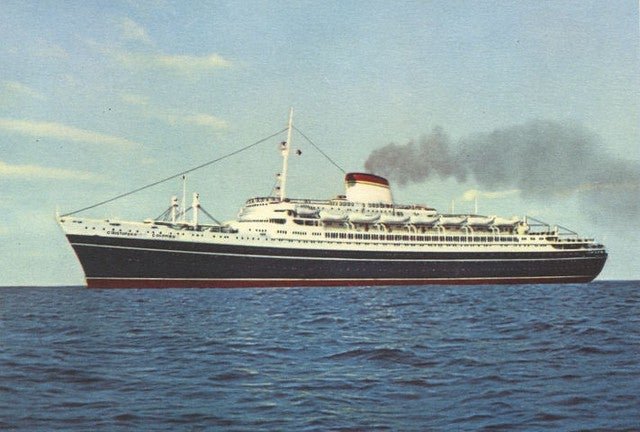
After WWII, the Italian Line found itself in the same shape as the rest of the Italian merchant fleet- most of their ships had been sunk or destroyed in the war, including their two record setting superliners
Rex
and
Conte di Savoia
. Postwar, they were able to restart passenger and cargo services to North America with an assemblage of smaller, 1920s era ships that, although lucky to survive the war, were becoming increasingly outmoded.
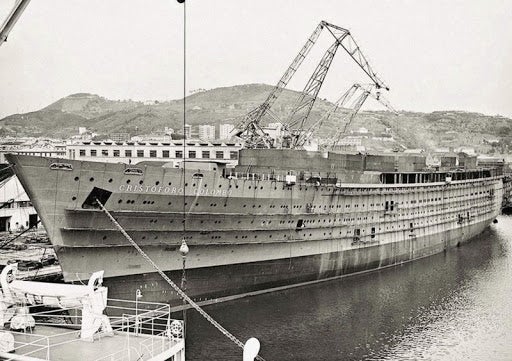
Rebuilding was a top priority, and the Italian government was prepared to lend a hand. Not only to provide employment at shipyards and improve commerce with the Americas, but also to signal to the world that Italy was back - leaving the wreckage of WWII and the gloom of the postwar economic devastation behind and entering the 1950s as a vibrant, modern country, once again able to take its place among the artistic and technological leaders of the world.
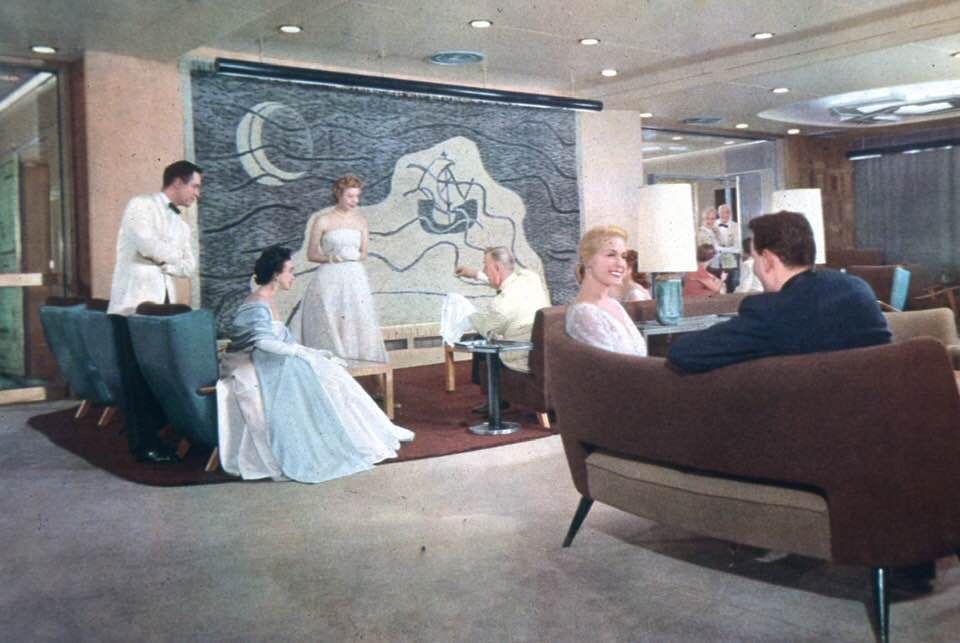
Rather than focus on gigantic and fast superliners, the Italian Line decided to build a pair of more moderately sized sister ships, which would nonetheless be elaborately decorated in the height of mid century modern fashion, with custom furnishings, tapestries, sculptures, and paintings commissioned from Italy’s finest artisans - among them, Gio Ponte, Nino Zoncada, and Gustavo Pulitzer Finale.
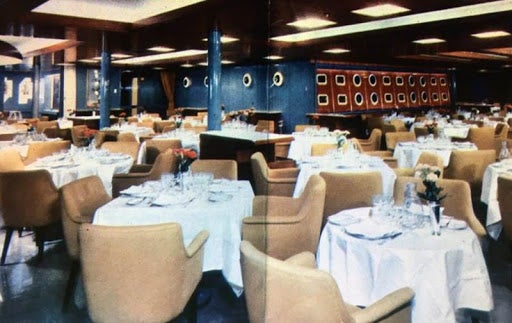
The first pair to be finished were named after Roman emperors -
Giulio Cesare
and
Augustus
- completed in 1951 and 1952 to serve the Genoa-Buenos Aires route.
The second, larger, pair were intended for the prime Genoa-New York service and were named after famous navigators -
Andrea Doria
and
Cristoforo Colombo
, completed in 1953 and 1954.
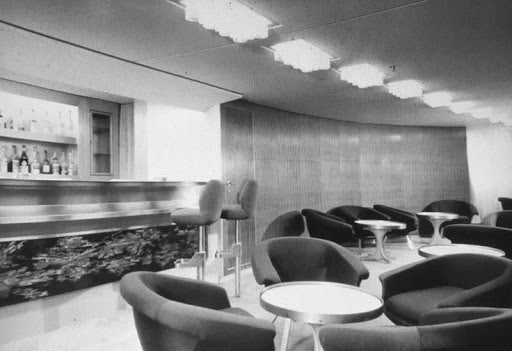
We all know what happened to
Andrea Doria
, but her younger sister was a bit luckier. Measuring 29,191 gross tons and 700 ft. long,
Cristoforo Colo
mbo
was built by the famed Ansaldo Shipyards in Genoa. She could carry 1,055 passengers in 3 classes, with 50,000hp steam turbines providing a top speed of 23 knots. The Italian government underwrote a large part of the construction costs, and provided a generous annual subsidy to offset operating costs.
Cristoforo Colombo
’s Atlantic career was mostly reliable and uneventful, the most notable moment perhaps being when the ship was chosen by the Vatican to carry Michelangelo’s Pieta to New York for an exhibition in 1964. For that, the First Class swimming pool was drained and an inflatable rubber cushion placed at the bottom of the deep end to serve as the statue’s makeshift cargo hold, and the loading was done with the ship in drydock to prevent any unexpected movements.
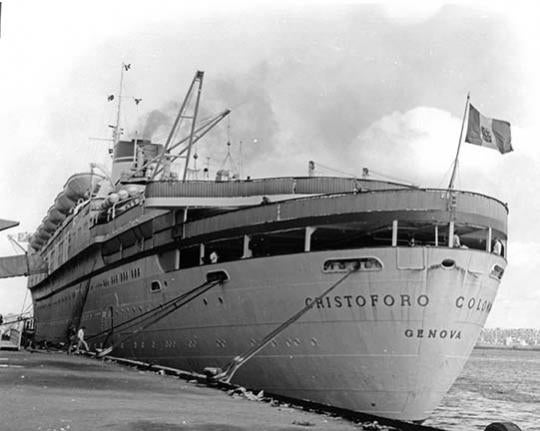
In the face of increasing competition from jet airliners, Cristoforo Colombo was taken off the North Atlantic run in 1973, and shifted to the South American route, which was still considered slightly more viable. However, this only lasted until 1977, when the Italian government cut the ship’s operating subsidy, and she was sold to Venezuelan interests for use as an accommodation vessel for oil workers. This lasted until 1981, when she was sold to a Taiwanese scrap metal firm. The new owners found the ship in better condition than they expected, and decided to move her to Hong Kong and offer her for sale in hopes of attracting interest from a cruise line, but there were no takers, and Cristoforo Colombo was ultimately scrapped on Taiwan in 1982.
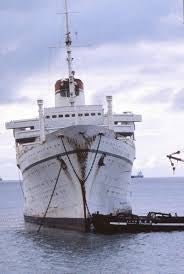
Although the Italian liners of the 1950s and ‘60s
would seem to have been well suited to cruise ship conversions, given that they were built for warm weather sailing, with outdoor swimming pools, lots of open deck space, and air conditioning, in practice, most of them were not viable for that use, with their rigidly old fashioned class divisions, large numbers of inside cabins, and very high manning requirements, given that they were built, in part, as government funded make-work projects.
 Chariotoflove
> ranwhenparked
Chariotoflove
> ranwhenparked
10/12/2020 at 23:02 |
|
So, in a sense, she did go West and eventually fall off the edge of the world.
 ranwhenparked
> Chariotoflove
ranwhenparked
> Chariotoflove
10/12/2020 at 23:04 |
|
Never heard from again
 Who is the Leader - 404 / Blog No Longer Available
> ranwhenparked
Who is the Leader - 404 / Blog No Longer Available
> ranwhenparked
10/12/2020 at 23:30 |
|
I find your disertations on the golden age of trans Atlantic passenger vessels endlessly fascinating. Keep it up!
 ttyymmnn
> ranwhenparked
ttyymmnn
> ranwhenparked
10/12/2020 at 23:40 |
|
Great read. Thanks
 ranwhenparked
> Who is the Leader - 404 / Blog No Longer Available
ranwhenparked
> Who is the Leader - 404 / Blog No Longer Available
10/12/2020 at 23:50 |
|
It seemed like it was getting quieter on here with some of the more active posters defecting during the COVID crisis and I couldn't think of what else to write
 Who is the Leader - 404 / Blog No Longer Available
> ranwhenparked
Who is the Leader - 404 / Blog No Longer Available
> ranwhenparked
10/13/2020 at 00:02 |
|
I never really understood that. What else are you going to do besides write aimlessly about obscure car trivia? I think these posts are very much up many of our alleys and I for one have enjoyed them.
You should put them all under a Kinja tag.
 Rusty Vandura - www.tinyurl.com/keepoppo
> ranwhenparked
Rusty Vandura - www.tinyurl.com/keepoppo
> ranwhenparked
10/13/2020 at 00:12 |
|
I really enjoyed that. Thank you.
 f86sabre
> ranwhenparked
f86sabre
> ranwhenparked
10/13/2020 at 06:30 |
|
This is good Oppo. The great liners have such an interesting and odd history.
 My X-type is too a real Jaguar
> ranwhenparked
My X-type is too a real Jaguar
> ranwhenparked
10/13/2020 at 07:49 |
|
On an Italian line slant I just learned the MV Stockholm is still afloat and was in service until the recent shutdown, its refit to a cruise ship was done in the ship yard that serviced the andria doria
 ranwhenparked
> My X-type is too a real Jaguar
ranwhenparked
> My X-type is too a real Jaguar
10/13/2020 at 09:23 |
|
And they did a really good job on it too, really upscale after the rebuild. Unfortunately, not too profitable over the 25 years since, lot of ownership changes. Too much of a throwback to 1960s style cruise ships. Elegant interiors, but no private balconies, shopping mall, fast food restaurants, skating rinks, wave pool, rock climbing wall, etc. They spent a fortune building a ship that was maybe 20 years out of date in conception the day the rebuilding was finished.
Finally seemed to find a niche with expedition-style cruises with an educational slant to smaller, out of the way ports, but COVID probably means the next stop is the scrapyard.
 ranwhenparked
> Who is the Leader - 404 / Blog No Longer Available
ranwhenparked
> Who is the Leader - 404 / Blog No Longer Available
10/13/2020 at 18:23 |
|
I guess, I mean, its all transportation related. And you can carry cars on a ship, right? The Chrysler Norseman was on the Andrea Doria.
 Who is the Leader - 404 / Blog No Longer Available
> ranwhenparked
Who is the Leader - 404 / Blog No Longer Available
> ranwhenparked
10/13/2020 at 18:36 |
|
I don’t think anyone’s complaining. But can you achieve full opposite lock in a boat? Probably, but it won’t look as cool. Not convinced you can do the same in a plane or train as you could in an automobile though.
 ranwhenparked
> Who is the Leader - 404 / Blog No Longer Available
ranwhenparked
> Who is the Leader - 404 / Blog No Longer Available
10/13/2020 at 18:46 |
|
I’m not sure on that, but what about doing 52% of forward top speed in reverse?
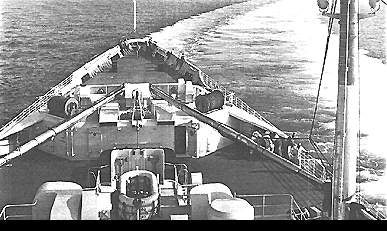
 Who is the Leader - 404 / Blog No Longer Available
> ranwhenparked
Who is the Leader - 404 / Blog No Longer Available
> ranwhenparked
10/13/2020 at 18:53 |
|
Could work but you’d have to show me video proof.
 ranwhenparked
> Who is the Leader - 404 / Blog No Longer Available
ranwhenparked
> Who is the Leader - 404 / Blog No Longer Available
10/13/2020 at 19:11 |
|
I don't know if there is footage of that, I've only ever seen that one photo. All the records were declassified back in the '70s, so if there was film, I'm sure it would have been released by now
 Who is the Leader - 404 / Blog No Longer Available
> ranwhenparked
Who is the Leader - 404 / Blog No Longer Available
> ranwhenparked
10/13/2020 at 20:01 |
|
Why would you do such a thing anyways? Some sort of stress test?
 ranwhenparked
> Who is the Leader - 404 / Blog No Longer Available
ranwhenparked
> Who is the Leader - 404 / Blog No Longer Available
10/13/2020 at 20:07 |
|
It was the SS
United States
on sea trials in 1952 - 20 knots in reverse, just over 38 forward. Don’t see a wake off the bow like that everyday.
 Who is the Leader - 404 / Blog No Longer Available
> ranwhenparked
Who is the Leader - 404 / Blog No Longer Available
> ranwhenparked
10/13/2020 at 20:24 |
|
I just never see a wake at all but yeah that would really be something. Wonder if the cabin has good sight lines in reverse because that's really fast to go in reverse. Must have been a wild ride.
 ranwhenparked
> Who is the Leader - 404 / Blog No Longer Available
ranwhenparked
> Who is the Leader - 404 / Blog No Longer Available
10/13/2020 at 20:30 |
|
That ship was/is an amazing piece of work. They literally just put an Iowa class battleship powetrain inside a sleeker, lighter ocean liner hull and tuned it up to just shy of 242,000hp.
 Who is the Leader - 404 / Blog No Longer Available
> ranwhenparked
Who is the Leader - 404 / Blog No Longer Available
> ranwhenparked
10/13/2020 at 20:33 |
|
You could do some sick burnouts with that amount of power. Or drive dangerously fast in reverse. If it had ended badly that would be a hard one to explain.
“Why are you driving at top speed in reverse in conditions it was not designed to do?”
“Because we could."
 ranwhenparked
> Who is the Leader - 404 / Blog No Longer Available
ranwhenparked
> Who is the Leader - 404 / Blog No Longer Available
10/13/2020 at 21:02 |
|
Given the time, the designers were more interested in delivering 15,000 troops to fight the Commies on any corner of the globe in 14 days or less and sailing back without res upplying. Or, at least that's what they told the Navy to get funding